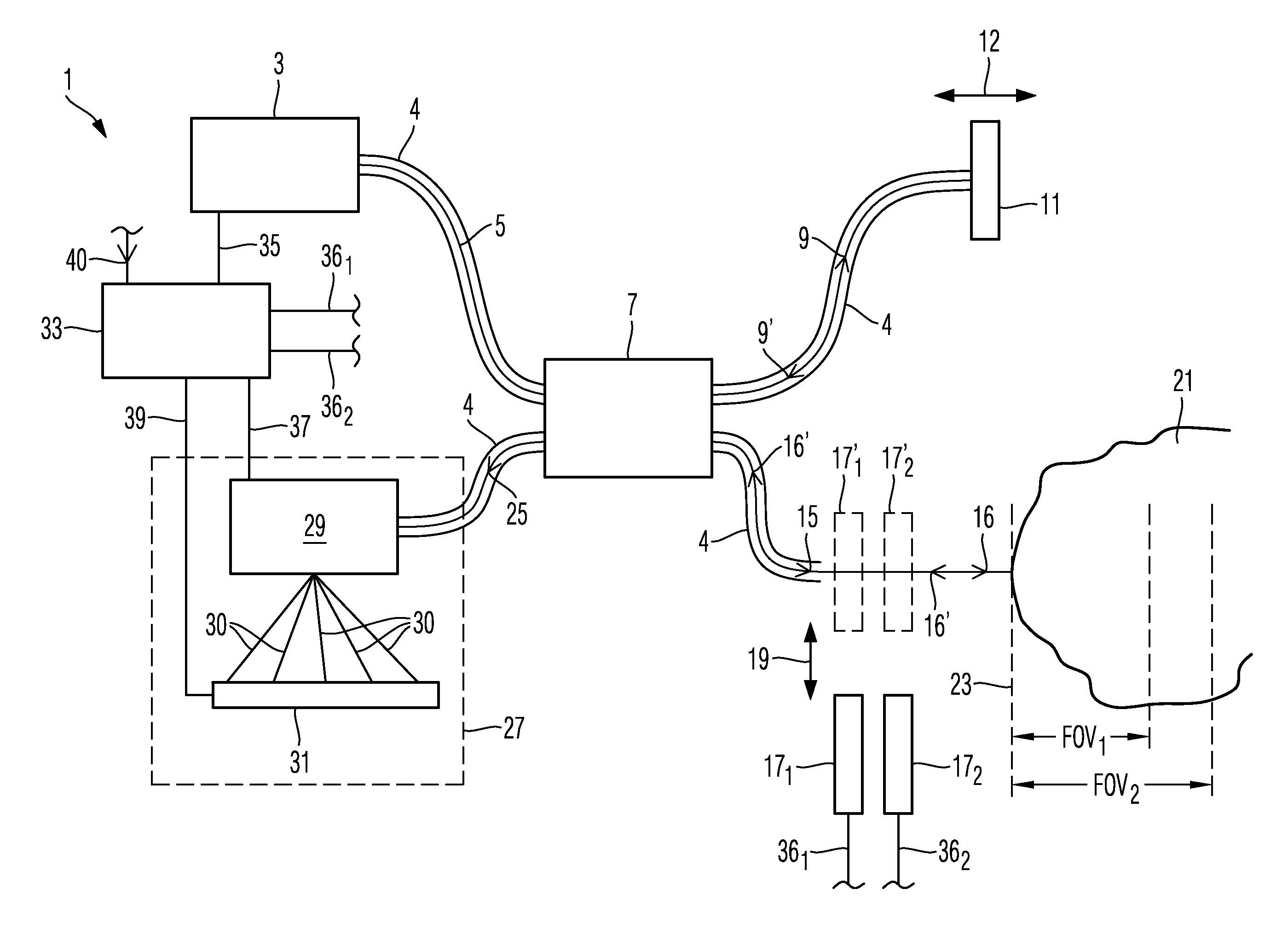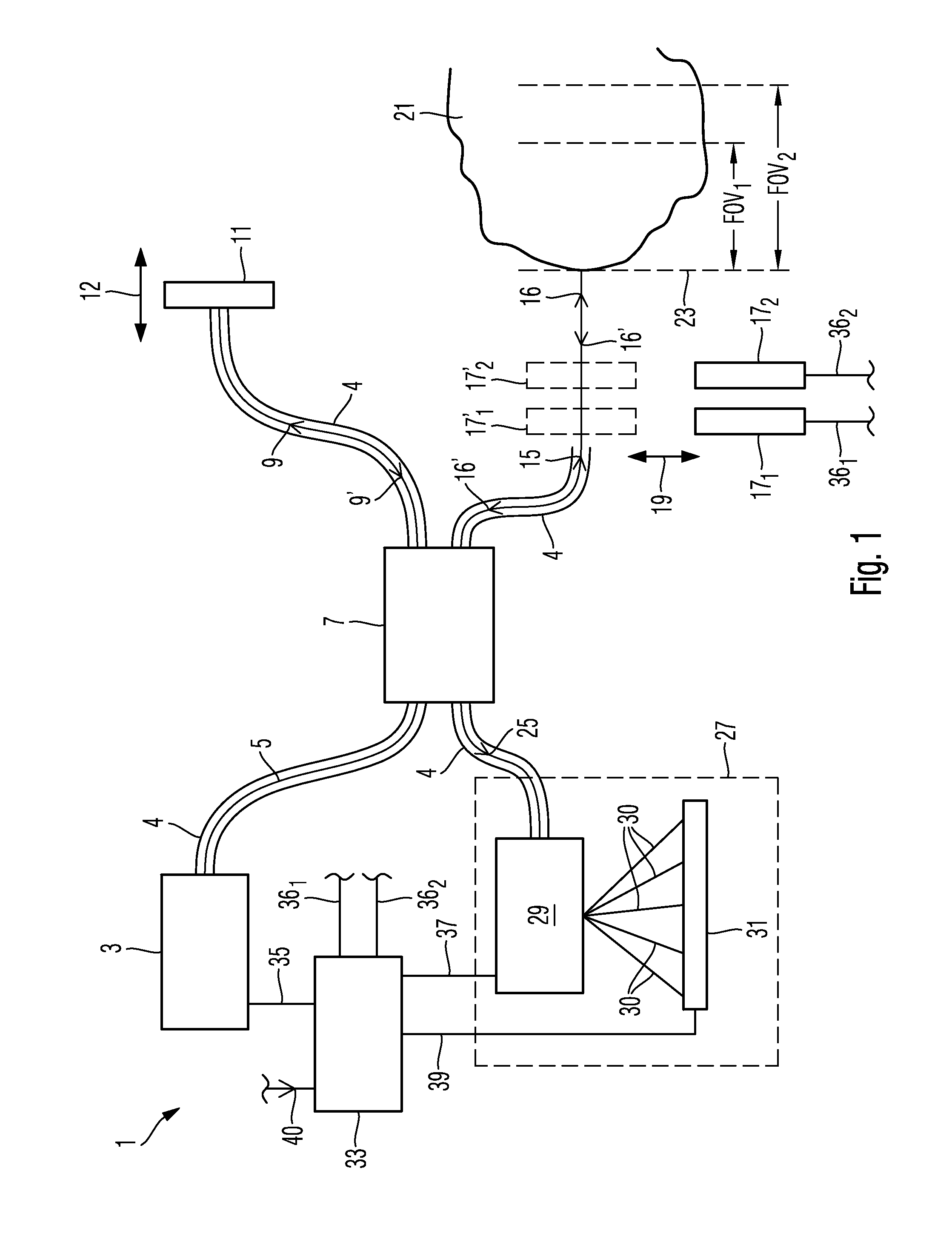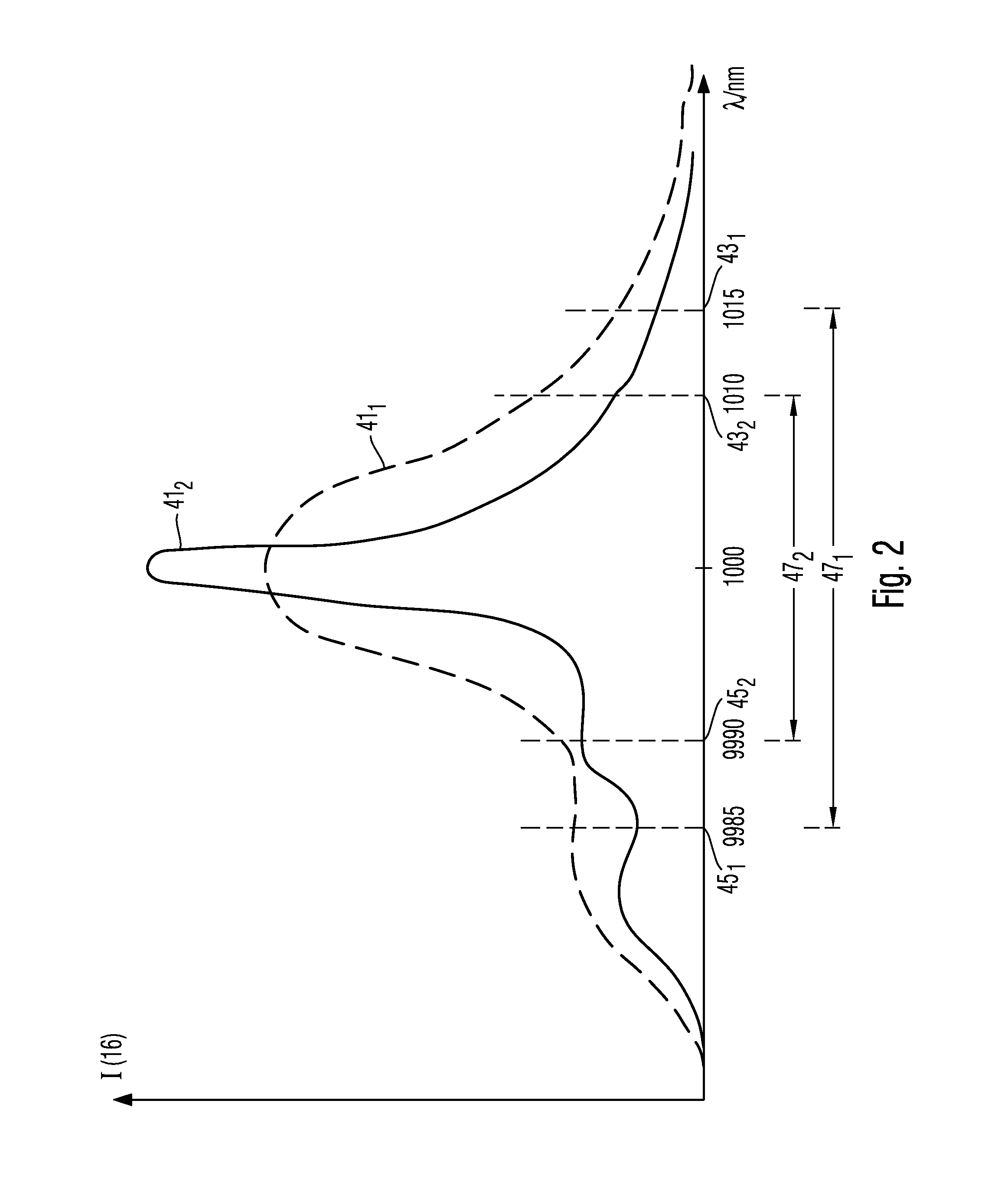Optical coherence tomography methods and systems
a coherence tomography and optical coherence technology, applied in the field of optical coherence tomography (oct) systems and methods, can solve the problems of sensitivity or the requirement of the total intensity of the measurement light illuminating the object, and the components are expensive and complex, and achieve the effect of reducing the sensitivity or the requirement of the total intensity of the measurement ligh
- Summary
- Abstract
- Description
- Claims
- Application Information
AI Technical Summary
Benefits of technology
Problems solved by technology
Method used
Image
Examples
Embodiment Construction
[0072]In the exemplary embodiments described below, components that are alike in function and structure are designated as far as possible by alike reference numerals. Therefore, to understand the features of the individual components of a specific embodiment, the descriptions of other embodiments and of the summary of the invention should be referred to.
[0073]FIG. 1 schematically illustrates a spectral domain OCT system 1 according to an embodiment of the present invention.
[0074]OCT system 1 comprises a light source 3 configured to generate light 5 distributed according to a particular spectrum. There are two variants of this embodiment described below.
[0075]In a first variant of the OCT system 1 light source 3 comprises a super-luminescent diode adapted to generate light 5 having a spectrum with a mean wavelength of around 1000 nm and having an adjustable spectral width. The spectral width is adjusted by adjusting an electric current supplied to the super-luminescent diode (SLD). D...
PUM
 Login to View More
Login to View More Abstract
Description
Claims
Application Information
 Login to View More
Login to View More - R&D
- Intellectual Property
- Life Sciences
- Materials
- Tech Scout
- Unparalleled Data Quality
- Higher Quality Content
- 60% Fewer Hallucinations
Browse by: Latest US Patents, China's latest patents, Technical Efficacy Thesaurus, Application Domain, Technology Topic, Popular Technical Reports.
© 2025 PatSnap. All rights reserved.Legal|Privacy policy|Modern Slavery Act Transparency Statement|Sitemap|About US| Contact US: help@patsnap.com



